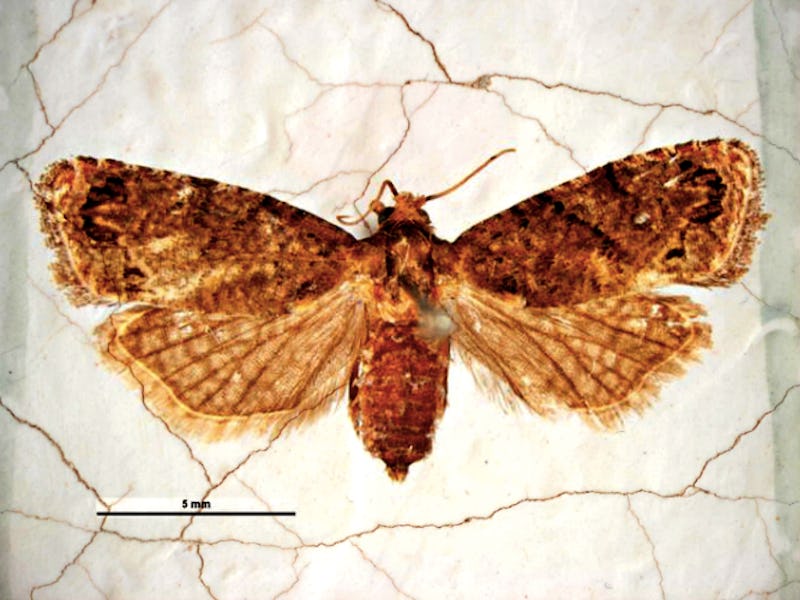Oldest Moth, Butterfly Fossil Discovery Adds Complexity to Insect Evolution
Their adaptations hint at how modern bugs will handle climate change.

Approximately 201 million years ago, Earth was transitioning from the Triassic to the Jurassic period. The environment was hot and arid — vastly different than the lush, subtropical world the planet would be by the time the Cretaceous period began. Dinosaurs and the first mammals were scurrying around, foraging for food and figuring their own ways through a changing landscape. It turns out, they had some unexpected companion we didn’t were fluttering about at the time: butterflies and moths.
In a paper published Wednesday in Science Advances, a team of German and American scientists identify the earliest known fossils of Lepidoptera, an order of insects that include butterflies and moths. These fossilized wing scales extend the minimum estimated age of Lepidoptera that have a proboscis — the tube-like structure butterflies and moths use to feed on the nectar of a flower — by 70 million years.
However, flowers didn’t even exist back then, leading scientists to conclude that these ancient insects evolved to have a proboscis as a response to the widespread heat and aridity of the time. Sucking up liquids, either from the air or from the pollination drops of gymnosperms like pines, was likely an adaptive innovation that ensured the Lepidoptera’s survival up to today.
Uncovered fossilized wing scales.
“Understanding the evolution of insects during times of dramatic climate change, such as in this case the evolution of moths and butterflies at the start of the Jurassic, is key to understanding how manmade climate change might affect the evolution of modern insects,” the scientists explain.
Led by Timo van Eldijk, Ph.D., a paleontologist at Utrecht University, the scientists recovered 70 ancient wing scales and scale fragments from drilled core unearthed in northern Germany. Analysis of the scales revealed they shared traits with living butterflies and moths, especially the wing scales that were the same as Glossata — the group of insects that have a proboscis.
Scanned electron microscope image of the dense scales of a living moth.
Besides serving as a novel and entirely unexpected find, the new discovery effectively pushes back the timeline of when scientists thought these creatures existed.
“Despite their important role in terrestrial ecosystems, the early evolutionary history of these insects remains murky and mired in an exceedingly poor fossil record,” the scientists write. “We explore for the first time the phylogenetic potential of dispersed lepidopteran wing scales encountered in sedimentary organic matter.”
Examples of the oldest wing and body scales of primitive moths taken from the core.
All Lepidoptera have scales, which cover their bodies, legs, and wings. The fossilized scales that the scientists uncovered from the sediment cores likely became buried in sentiments after they were knocked off by the insect’s encounters with wind and water. How the scales are structured informs the scientists of what taxonomic family the insects belong to, and specific morphological characteristics are indicative of what time period they existed in.
Flowers began to appear around 130 million years ago, about 70 years after these insects that these scales belonged to perished. Scientists don’t know yet why or how butterflies and moths began to use their curled tongue-like tubes to slurp up flower pollen, but the effect of that choice is reflected in our enjoyment of flowering gardens and fluttering bugs today.
How long we’ll get to enjoy butterflies and moths is another question. Scientists have already identified monarch butterflies as a population especially vulnerable to climate change, and according to the World Wide Fund for Nature, their ability to adapt may not be able to counterbalance their sensitivity to weather and climate. This new study hints that insects can evolve to survive a changing world, even if it takes growing a face-straw to do it.